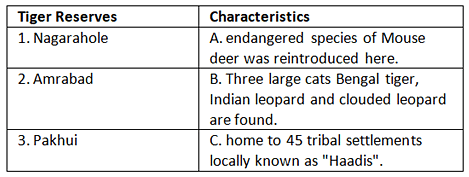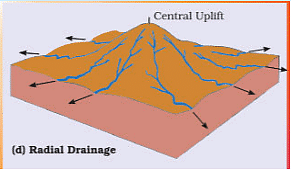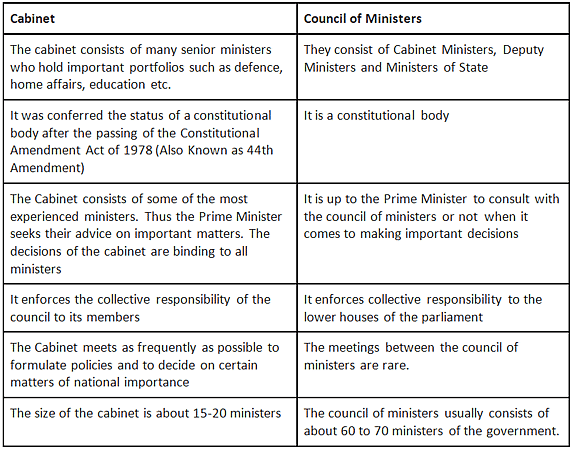UPSC CSE Prelims Paper 1 Practice Test - 8 - UPSC MCQ
30 Questions MCQ Test - UPSC CSE Prelims Paper 1 Practice Test - 8
Which of the following statements is/are incorrect regarding Flue Gas Desulphurization (FGD)?
-
It can remove more than 90% of the SO2 in the flue gases.
-
Dry FGD is more prominent as compared to wet type due to lower capital and operating expenditure.
-
It can be used to remove the mercury from flue gases.
-
Power plants with the FGD are waived from GST Compensation Cess.
It can remove more than 90% of the SO2 in the flue gases.
Dry FGD is more prominent as compared to wet type due to lower capital and operating expenditure.
It can be used to remove the mercury from flue gases.
Power plants with the FGD are waived from GST Compensation Cess.
Which of the following hills/range depict the radial form of drainage pattern?
| 1 Crore+ students have signed up on EduRev. Have you? Download the App |
Consider the following statements about World Meteorological Organization (WMO)
It is not a specialized agency of the United Nation.
World Meteorological congress meets every four years to elect president and vice-president of the organization.
It has linked recent locust swarms with increased frequency of extreme weather events.
Which of the statements given above is/are correct?
It is not a specialized agency of the United Nation.
World Meteorological congress meets every four years to elect president and vice-president of the organization.
It has linked recent locust swarms with increased frequency of extreme weather events.
With reference to Organic Photovoltaic (OPV) Cells, consider the following statements:
It is a type of solar cell where the absorbing layer is typically made of polymers.
Manufacturing cost is cheaper than the inorganic Photovoltaic cells.
Compared to inorganic photovoltaic cells, OPV cell have low efficiency and low stability.
Which of the statements given above is/are correct?
Match the following pairs of Tiger reserves in India and their characteristics

Which of the following pairs is/are correctly matched?
Which of the following Cryptocurrencies utilise the Proof of Stake (PoS) system?
Cardano
Binance Coin
Doge Coin
Lite Coin
Solana
Select the correct answer using the codes given below.
Consider the following statements:
Capital punishment in India has been limited to the rarest of rare cases.
The Indian Penal Code 1860 provides with the death penalty for taking up arms against the state.
Which of the statements given above is/are correct?
Consider the following statements with reference to the criteria used by the Finance Commission of India for the devolution of funds to the States:
Under the income distance criterion, States with lower per capita income would be given a higher share to maintain equity among States.
Under the demographic performance criterion, lower devolution is made to the States having lower fertility rates.
Which of the statements given above is/are correct?
Consider the following statements:
The Supreme Court has original power as tl1e aggrieved citizens can directly approach it without any appeal.
The right to move the Supreme Court cannot be suspended under any circumstances.
The Parliament can empower any other court including the High Courts to issue directions, orders and writs of all kinds.
Article 32 is a part of the basic structure of the Constitution pronounced by the Supreme Court.
Which of the statements given above are incorrect with reference to Writ Jurisdiction under Article 32?
Rajya Sabha does not have equal status with Lok Sabha in the matters of
Consider the following statements:
Unlike Cabinet Ministers, the Council of Ministers is a constitutional body whose size and classification is mentioned in the Constitution.
Unlike Council of Ministers' meeting, Cabinet Ministers' meetings include Ministers of State.
Which of the statements given above is/are not correct?
At present, different religious communities in India are governed by a system of personal laws. Consider the following statements in this context:
The term 'Hindu' in the Hindu Personal Laws includes Hindus, Sikhs, Jains and Buddhists.
Hindu Personal Laws include customary practices of the tribes from North-East India.
Muslim Personal Law is codified based on Muslim religious texts.
Which of the statements given above is/are correct?
Who among the following was a member of Simon Commission who subsequently became the British Prime Minister and later was to oversee the granting of independence to India & Pakistan in 1947?
Dharamshala Declaration 2022 is related to which of the following?
Which of the following vaccines are type of live attenuated vaccines?
Covaxin
Oral Polio Vaccine
Tuberculosis Vaccine
Cholera Vaccine
Rotavirus Vaccine
Select the correct answer using the code given below:
Consider the following statements regarding permafrost:
It is defined solely based on temperature and duration.
It contains large quantities of organic leftover from thousands of years.
In northern hemisphere, it is found in higher latitudes only.
Thawing of permafrost is a major contributor to climate change.
Which of the statements given above is/are correct?
Which of the following options regarding Forward Bloc during the Indian Freedom movement is correct?
Which of the following are type of White Blood Cells (WBC)?
Neutrophils
Lymphocytes
Erythrocytes
Basophils
Select the correct answer using the code given below:
Which one of the following is not the power of a civil court in India?
With reference to Vegetable Oil, consider the following statements:
India is the world’s second largest importer of vegetable oil.
As per the OECD-FAO Agricultural Outlook 2021-2030, India is projected to maintain a high per capita vegetable oil consumption growth.
Which of the statements given above is/are correct?
Consider the following areas with reference to the citizen-centric areas identified by the Department of Expenditure for reforms in Urban Local Bodies (ULBs) to provide better public health and sanitation services to citizens:
Implementation of One Nation One Ration Card System
Ease of Doing Business reform
Urban Local body/utility reforms
Power Sector reforms.
Which of the areas given above are correct?
Consider the following statements with reference to the Supreme Court:
The constitutional cases are decided by a Bench consisting of at least seven Judges.
The President of India can appoint places other than Delhi as its seat.
Which of the statements given above is/are not correct?
The Chief Minister of Maharashtra will not be eligible to vote in the Presidential election if
Consider the following statements with reference to the World Food Program:
It was founded in 1961 by the Food and Agriculture Organization and United Nations General Assembly.
It is a member of the United Nations Sustainable Development Group (UNSDG).
It was awarded the Nobel Peace Prize in the year 2019.
Which of the statements given above are correct?
Which of the statements given below is/are not correct with reference to the Supply Chain Resilience Initiative?
-
It is an approach to help a country diversify its supply risk across the supplier nations instead of depending on few countries.
-
It aims to create a virtuous cycle of supply chain resilience to attain sustainable and inclusive growth of the region.
-
It has been launched by India, Japan and the United States of America.
Select the correct answer using the code given below:
With reference to State of the Education Report for India 2022, consider the following statements:
This report is released by NITI Ayog and the Ministry of Education.
The report focused on the theme of teachers, teaching and teacher education.
Which of the statements given above is/are correct?
Which of the following options regarding the legal system of Delhi Sultanate is correct?
Consider the following pairs:

Which of the pairs given above is/are correctly matched?
Which of the following statements is/ are the correct reasons for the decline of the Mauryan dynasty?
A quick succession of weak rulers who couldn’t maintain a strong central empire.
Increase in inefficiency and corruption among the Mauryan bureaucracy.
Enormous expenditure on army and bureaucracy caused financial crisis.
Select the correct option using the code given below:
Consider the following statements about the committees for Poverty Estimation in India:
Lakdawala Committee recommended a uniform ‘national’ poverty line throughout India.
Tendulkar Committee recommended uniform poverty line basket for rural and urban areas.
Rangarajan Committee estimated poverty based on expenditure on nutrition only.
Multidimensional Poverty Index is estimated based on Health, Education and Standard of living.
Which of the statements given above is/are correct?



















